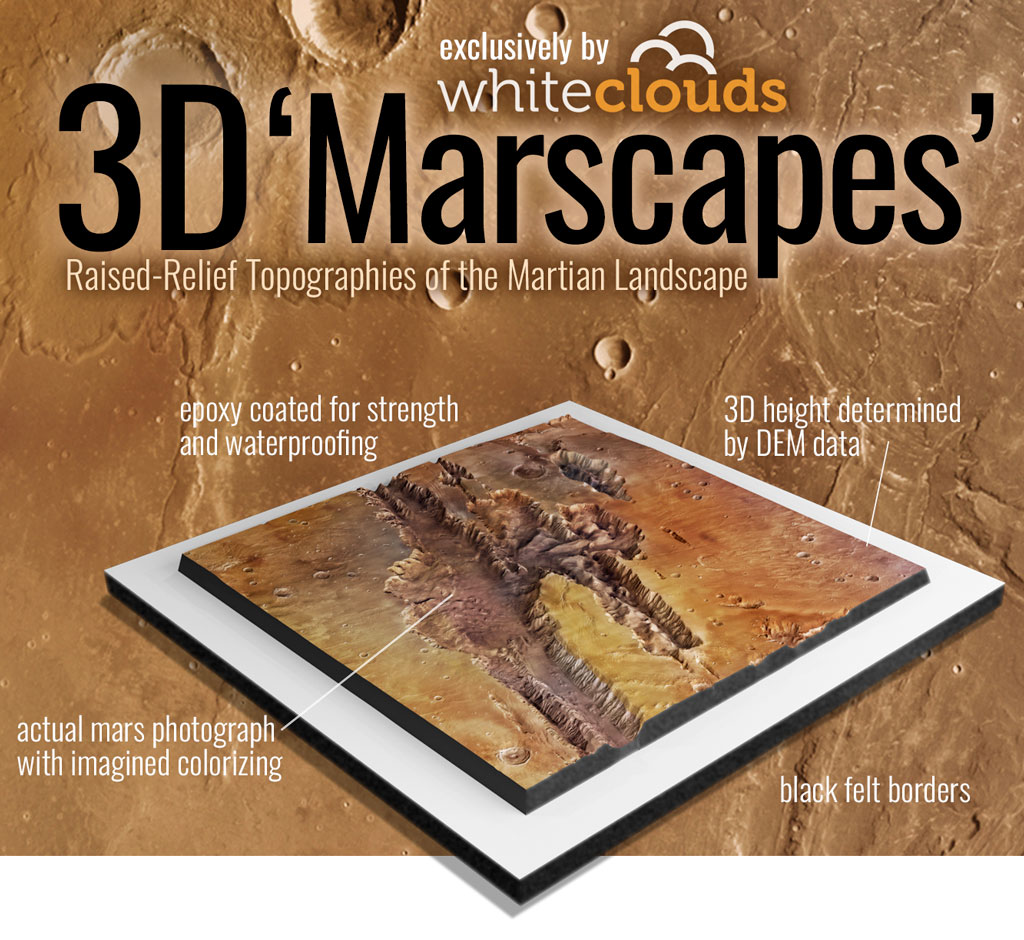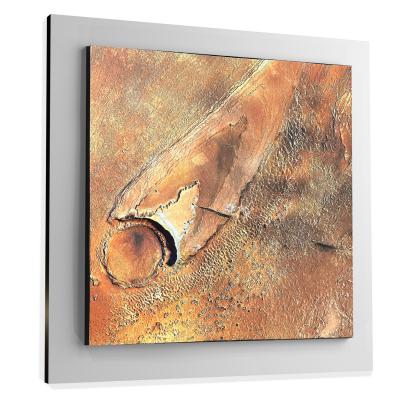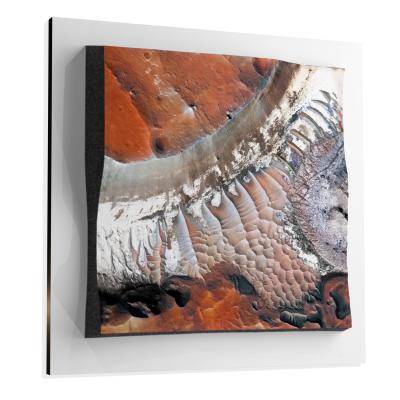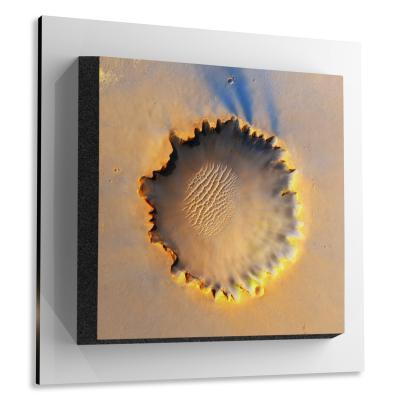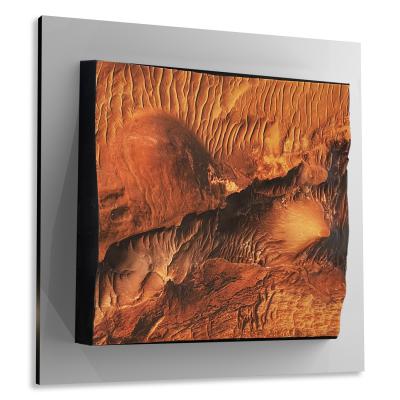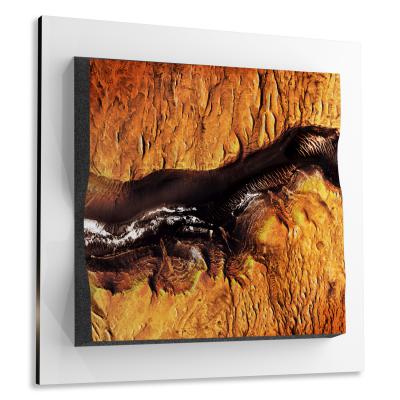Milankovic Crater
Milankovic Crater
We Build Custom 8K Mars Canvas Prints of Milankovic Crater
Did you know we make
custom
8K Mars Canvas Prints

and
3D Marscapes

Milankovic Crater
Milanković Crater is an enigmatic and scientifically fascinating feature on the Martian surface. Named after Milutin Milanković, the Serbian mathematician and climatologist known for his work on Earth’s orbital cycles, the crater has attracted considerable attention from the scientific community for its unique geological and geomorphological features.
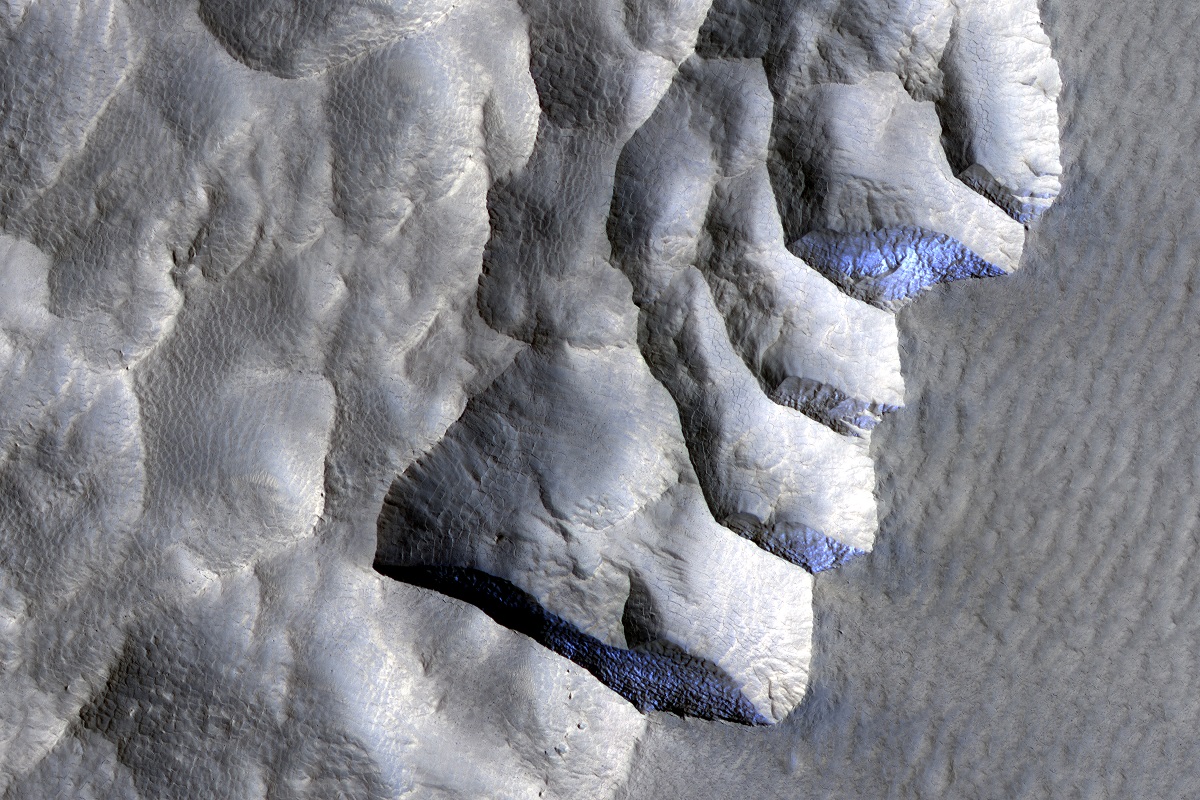 Western Edge of Milankovic Crater
Western Edge of Milankovic Crater
Geographical Location
Situated in the Martian northern hemisphere within the Arcadia quadrangle, Milanković Crater occupies specific geographical coordinates, lying at approximately 54.4°N latitude and 213.9°E longitude. This colossal impact crater spans an expansive area, with an approximate diameter of an astonishing 123 kilometers. The crater’s size and geographical positioning make it a highly noticeable and scientifically significant feature within its broader Martian landscape. The vicinity includes an array of other large craters as well as extensive plains characterized by their own distinct geophysical features. Given its higher latitude, Milanković Crater undergoes unique seasonal changes, such as periodic frost coverage and variable solar illumination patterns. These cyclical factors play an influential role in shaping both the geological and geomorphological features found within and around the crater. Moreover, its high-latitude location sets it apart as an area of particular scientific interest by offering a distinct comparative backdrop to the features usually observed in Mars’ equatorial regions.
Advertisement
Sample Marscapes
Geological Composition
The geological framework of Milanković Crater serves as a fascinating archive, capturing key episodes of Martian history. Dominating the crater floor are intricate sedimentary deposits, including strikingly layered sedimentary rocks that testify to a complicated history of deposition. These layered structures are predominantly composed of sulfates and clays, which point to the distinct possibility of past aqueous activities within the crater. Alongside these sedimentary markers, there is also evidence of mineralogical components like olivine and pyroxene. These minerals strongly suggest a basaltic origin, most likely derived from lava flows that may have at some point filled the crater following its initial formation. Moreover, a diverse range of erosional features has been documented within Milanković Crater. These include wind streaks, signs of fluvial action, and even indications of past glacial activities, thereby offering multiple lines of inquiry into how various erosional agents have acted upon the crater over Martian geological timescales. This cornucopia of geological markers propels Milanković Crater into the spotlight as a target of intense scientific exploration.
Significant Discoveries
Evidence of Water
One of the groundbreaking discoveries within Milanković Crater is the accumulating body of evidence pointing to past water activities. The sedimentary layers rich in sulfates and clay minerals offer compelling clues to the presence of liquid water at some stage in the crater’s history. These minerals typically form in aqueous environments, further bolstering the argument for past water activity. The crater’s geological features also include erosional structures that strikingly resemble river valleys and fluvial channels, strongly hinting at surface water flow in ancient Martian history.
Complex Layering
The intricate layering observed within the sedimentary rocks of Milanković Crater suggests an elaborate geological history that likely incorporates multiple epochs of sediment deposition and subsequent erosional processes. These events could be correlated with fluctuating climatic conditions on Mars or episodic volcanic activities, contributing to the crater’s complex geological narrative.
Scientific Missions
Numerous orbital missions have offered invaluable contributions to our understanding of Milanković Crater. NASA’s Mars Reconnaissance Orbiter (MRO) has been particularly instrumental in this respect, supplying high-resolution imagery via its High-Resolution Imaging Science Experiment (HiRISE). This has enabled detailed analyses of both the geological and geomorphological features within the crater. Additionally, the European Space Agency’s Mars Express mission has also been crucial in mapping the crater’s mineralogical composition through its specialized instruments. Data from these missions have not only significantly expanded our current understanding of Milanković Crater but also laid the foundational work for potential future missions, which may include landers or rovers aimed at conducting even more in-depth analyses.
Geomorphological Features
The geomorphological landscape of Milanković Crater serves as an intricate tapestry of features that tell a captivating tale of Martian surface evolution. Chief among these are the layered sedimentary deposits, which hold immense scientific interest due to their potential to reveal the crater’s complex depositional history. Beyond these, a myriad of erosional features adds complexity to the Martian landscape—these include gullies suggestive of fluvial action, potential river valleys that might indicate past water flow, and even wind streaks revealing aeolian processes. This rich assortment of erosional features strongly points to a diverse history of erosional agents acting upon the Martian surface. These complexities transform Milanković Crater into an intriguing subject, ripe for multi-disciplinary studies aimed at unraveling the myriad processes that have shaped the Martian surface throughout its history.
Milanković Crater serves as a rich geological and geomorphological archive, encapsulating various aspects of Martian history within its confines. Its unique geographical location offers a distinct set of conditions, making it a focal point for scientific research aimed at understanding the Red Planet. From evidence of past water activity to complex sedimentary layering and intriguing erosional features, Milanković Crater offers a microcosm of Mars’ intricate geological history. Further scientific missions targeting this fascinating feature could yield even deeper insights into the planet’s past, present, and perhaps even its future potential for harboring life.
Check out our 3D Mars Learning Center for more information on Mars and Milankovic Crater. You can also learn more at: NASA Mars Exploration.
More About Mars
Contact us today to learn more about our 3D services and how we can help you achieve your goals.
